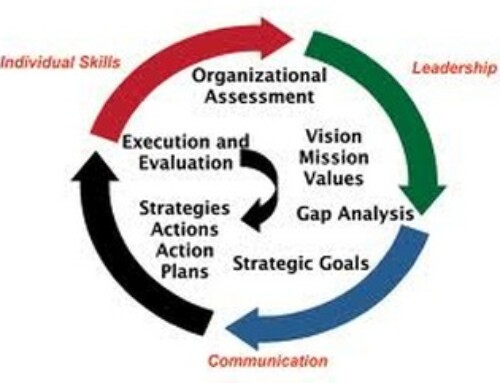Web Stats- What are Web Statistics, Where do I see my web statistics?, and How to I interpret web statistics?
Internet marketing affords the agent and broker the very best methodology for measuring advertising – all types including print, TV, radio and web.
There are a few basic concepts that need to be understood in order to measure the effectiveness of your advertising and the effectiveness of your website at achieving the holy grail – lead conversion.
Where do I go to see my web stats?
The first thing that you need to know about your website is how to access your web statistics. If you built your website internally, ask the IT guy to give you a walk through. If you purchased your website from a web development house, call them and inquire about accessing your web stats. Either way, web stats work by inserting software code into each page of your website that tracks activity on that page and sends the results to a database. In turn, this database can be used to generate your web stats.
How many people come to my web site? The Traffic Report
In looking at your web stats, look first at How Many Unique Visitors come to your website. Ignore hits – which is usually referring to a measure of mouse clicks on your site. A Visitor is the measure of how many people walked into your online office. Visitors are only counted once per day – so if the same person comes 10 times, we only count them once. In traditional marketing, this is referred to as reach.
If you want to get fancy, you can divide the total number of visitors by the number of unique visitors per day and get the frequency of visit per customer, but this is a relatively numb statistic in real estate.
Now that you understand the number of people visiting your website, lets turn now to the next important stat.
Where are they coming from? Referrer
In web stat language, a website that sends people to you is called a referrer. Your website stats actually keep track of the website address that a person came from when they came to your website.
We did research in 2005 regarding Referrers and surveyed the web stats of 36,000 websites built by Wolfnet Technologies. We divided the groups into Large Brokers (250+ agents), Mid Size Brokers (100-250 agents) Small Brokers, Top producers, New websites, etc. The startling discovery was that for each group, they all had one thing in common – 90% of their web traffic came from “No Referrer” – indicating that most people who visit an agent or broker website actually type in the URL.
This came as quite a shock to the participants who were paying a lot of money for Search Engine Optimization. The reality is, that in 2005, consumers to not go to search engines to begin their property search. They usually start out off-line. Broadly, this indicates that Print advertising is very effective – but here I am using widest definition of the word Print – listing signs, business cards, magazines, news paper, etc.
Now that they are here, what do they do on my website? Access Statistics
Access Statistics refers to the pages viewed, and the paths taken to view those pages. What we found in the 2005 study was that 97% of people went directly to property search and did not view any other page on the website. On average, they viewed 67 listings on each visit.
This is great news! Property Search is where lead capture occurs – when people sign up to get automatic listing notifications, save their search, save a listing to favorites, forward a listing to a friend, etc.
How do I use these to measure my marketing channels?
To get started, set a benchmark. Determine how many people are coming to your site today, and how many Leads you get, and relate that to how many sales you get from those leads. Our benchmark is 2% of traffic generates a lead, and 1/5% converts to a sale. In other words, for every 500 people that came to the site, we get 10 leads and convert 1 to a sale.
Now that you have a benchmark, look into the 500 people coming to the site. Because most are typing in the URL from print advertising, you need to test market using different URLs for each marketing channel – for the news paper use mybrokername.com, for the magazines use visitbrokername.com, for TV use yourbrokername.com, etc.
This is the easy part. Whenever you are going to test response rates for an advertising channel, purchase a new domain name specifically for the ad. We did a test for magazine advertising in 5 different California markets where 30,000 magazines were printed for each market. We purchased different domain names for each ad and advertised a median priced home for that area. We learned was that 8 visitors a day came to the website by typing in the URL from the ad. I would expect that you will have similar results.
We compared this to Newspaper advertising in the same markets. The number of newspapers printed varied widely in each market, as did the results. As it turns out, newspapers are good traffic/lead generators in small markets (6 visits per ½ page ad) and very poor in San Francisco – 4 visits per ½ page ad. Our results were so varied that it is difficult to predict what the results will be in your market.
From this, we were also able to measure conversion rates –
Magazines – for the the 4 week period that the ads were in circulation, we had around 225 visitors to each domain. The lead rates were 5% – just over 11 leads generated per market.
Newspaper – lead rates were non-existent in San Francisco and around 2% in the smaller markets –
We did not test TV or Radio in the study, but would encourage you to do so in your research.
All leads are not created equal
In our research, we wanted to determine if all lead sources generated sales equally. You should do the same. Doing this is pretty tricky and not very scientific.
The major problem with this element of web stat reporting is that you need a lot of traffic to get results in the short term. Also, it only accounts for people who are converted from a lead to a sale. If they did not become a lead first (register in some way to the website), they are not counted.
In our research, we compared Pay-Per-Click on Google.com, magazine advertising, and Cost per thousand impressions on Zillow.com.
Here is what we learned.
Google results – For popular keywords, ie. “your town real estate” we set up a special URL of brokername.com/google. This allowed us to differentiate the generic traffic from google with the paid traffic from Google. We found that our click through rate was 1% and our average cost per click using the Google optimizer was $.67 and we capped our montly budget at $1000. We were getting around 1500 visitors for each of the 3 months that we ran the study and averaging 10 registered leads – no registered lead purchased a home in 6 months from the date of the study.
Zillow.com – we are still in our Zillow.com research mode. We used the same budget of $1000 at a rate of $14 per 1000 impressions and interestingly enough, had a .5% click through rate – far less than Google. However, our registered lead rate was the same – around 10 per month – same as Google. This was for the month of December 2006 when Zillow.com made major announcements about allowing anyone to list a home for sale on their website for free. To date, none have converted to a sale – but we are hopefull.
Magazine results – these faired better than all of the rest. 1 in 7 registered leads converted to a sale within 3 months. Magazine advertising has been an integral element in successful real estate advertising for the past 20 years.
Web Stat Summary
Web stats are a great way to benchmark two key elements that are fundamental in real estate – but they are only benchmarks.
1. How well are we doing at converting leads into sales
2. What direct marketing channels send the highest volume and quality of customers.
In our assessment, the “Gieko Effect” is fully overriding consumer behavior much in the way that it did the insurance industry. Your advertising directs people to your website where they become informed about available properties, then they either call or electronically contact you. This evolution has occurred in line with Internet adoption rates and IDX adoption rates.
We hope that this information is helpful to you. WAV Group is available to provide you with a similar analysis of your performance in your market. Having this information will assist you in targeting your marketing and increasing your ROI. It will also help to discern the agent training needs that you may have for lead conversion.
Contact us anytime for a confidential conversation about our broker consulting services.





Leave A Comment